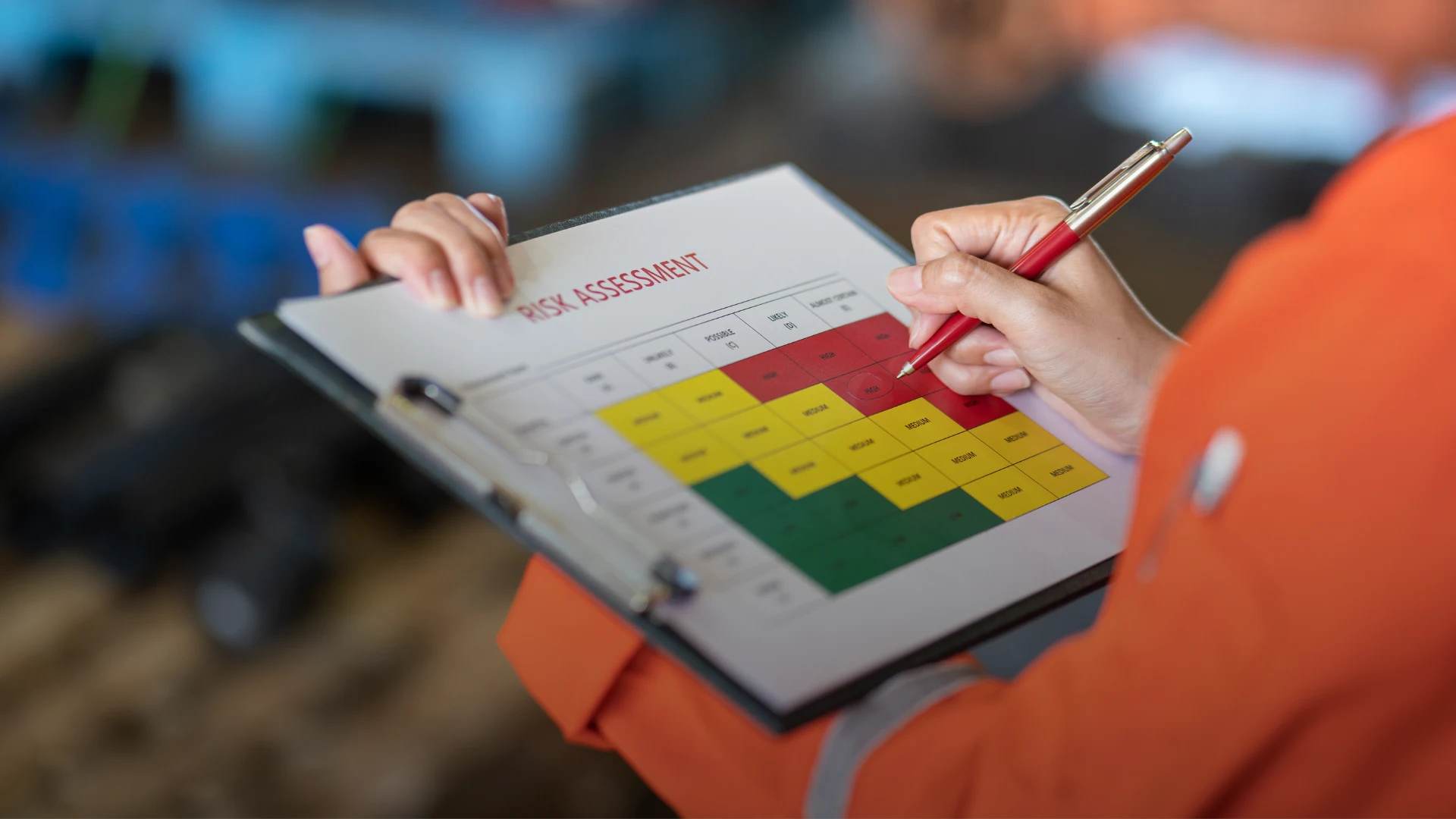
CMMS, Trakref
Why Centralizing Refrigerant and Asset Data Is the Foundation for AI & Compliance

Facilities management teams know that even the most sophisticated technology can’t fix broken data.
Artificial intelligence dominates many industry conversations, especially as it relates to companies gaining a competitive advantage through AI. However, facilities professionals are also aware of the fact that successful AI implementation is dependent upon the data provided to the platform. Bad input equals bad output.
It is essential to have accurate, centralized information about your assets and refrigerant systems, and that’s not just because of theoretical benefits.
With the AIM Act’s reporting requirements taking effect in 2026, organizations that lack a unified system for tracking refrigerant data and HVAC/R assets will find themselves scrambling to piece together information from disconnected sources. The window to prepare is narrowing.
Whether you’re using AI now or planning to implement it in the future, you can start building a foundation of centralized refrigerant and asset data, which is especially useful for compliance and reporting.
Building a single source of truth for facilities and refrigerant data isn’t about chasing the latest trend. It’s about creating the infrastructure that makes everything else possible. With centralized data, you’ll be prepared to meet regulatory deadlines today and leverage advanced analytics tomorrow.
Why is centralized data the foundation for both AI and new compliance rules?
What makes centralized data so important, especially when it comes to the twin issues of AI implementation and regulatory compliance?
To start, organizations with clean, connected information can generate compliance reports in minutes, identify patterns in equipment failures, and make informed decisions about capital investments. Those without it spend countless hours reconstructing basic facts about their operations.
The AIM Act makes this reality urgent.
What is the AIM Act’s Impact on Data Management and Storage?
Starting in 2026, facilities using certain refrigerants must report detailed consumption and emissions data to the EPA. This means tracking every pound of refrigerant purchased, used, and recovered across potentially hundreds of locations.
For organizations managing refrigerant data in spreadsheets or across multiple disconnected systems, compliance becomes a manual nightmare — and an expensive one, if your organization isn’t on top of it.
Steven Blumenfeld of Fexa Trakref describes the problem clearly: at one point, he says, “We had data scattered across different platforms. When we needed to pull together refrigerant information for compliance or when our finance team needed capital planning data, it required significant manual work.”
Beyond immediate compliance needs, centralized data creates the foundation for future capabilities. Predictive maintenance, energy optimization, and yes, AI-driven insights — all of these require consistent, reliable information about assets and their performance. But the foundation must exist first.
What problems come from scattered or incomplete HVAC/R and facilities data?
We often refer to incomplete data as fragmented data. It’s not that the information wasn’t entered into a system; it’s that the information was entered into too many systems, or systems that aren’t fully integrated with one another.
Fragmented data creates cascading failures across operations. When refrigerant tracking lives in one system, asset information in another, and service records in a third, even basic questions become difficult to answer.
The immediate costs are tangible:
- Compliance teams waste hours reconstructing refrigerant usage from paper invoices and disconnected digital records.
- Service providers submit work orders that don’t reference the correct equipment ID numbers, making it impossible to track asset history.
- Finance departments struggle to calculate accurate total cost of ownership because maintenance records don’t connect to asset data.
Refrigerant tracking suffers when data isn’t centralized. A facility might have accurate purchase records but incomplete recovery documentation, making leak detection nearly impossible. Or maintenance technicians might record refrigerant additions in service notes that never integrate with compliance tracking systems.
“When you’re managing hundreds of locations, the coordination challenge becomes overwhelming,” Steven Blumenfeld. notes. “We needed visibility into what was happening across our entire portfolio, not just individual sites.”
The risk extends beyond operational inefficiency. Consider that:
- Incomplete refrigerant records can lead to undetected leaks that increase costs and environmental impact.
- Missing asset information makes preventive maintenance programs ineffective.
- Teams face the time-consuming work of verifying data quality across multiple sources during audit season
These problems compound over time. The longer organizations operate with scattered data, the more difficult and expensive it becomes to correct the issue.
How can centralizing refrigerant and asset data help you stay ahead of 2026 regulations?
Proactive centralization transforms regulatory compliance from a crisis into a routine process.
Organizations that build unified systems now will submit their first AIM Act reports with confidence, while competitors struggle to gather basic information.
The AIM Act requires detailed reporting on refrigerant purchases, usage, and emissions—data that must be accurate and auditable. A centralized platform connects this refrigerant information directly to the assets using it. This creates an automatic audit trail.
Here’s an example: When a technician adds refrigerant during a service call, that transaction immediately links to the specific equipment, location, and work order.
This connection delivers several advantages:
- Automated compliance reporting pulls directly from operational data rather than requiring manual compilation.
- Complete asset histories make it easier to identify chronic leakers and prioritize repairs.
- Financial teams can calculate the true cost of refrigerant management, including both purchase expenses and compliance overhead.
“Having integrated systems meant we could see the complete picture,” Steven Blumenfeld explains. “Not just refrigerant data or asset data separately, but how they connected to show us where we had opportunities to improve.”
Although the 2026 regulations are looming, the strategic value of centralized data extends beyond 2026. Regulatory requirements will continue evolving as governments address climate concerns.
Organizations with flexible, centralized data platforms can adapt to new reporting requirements without rebuilding their entire information infrastructure. They can also demonstrate environmental stewardship to stakeholders using verified operational data rather than estimates.
For a comprehensive overview of refrigerant tracking best practices, check out our Fexa Guide to Refrigerant Tracking.
Lastly, centralized data prepares organizations for eventual AI capabilities. While implementing AI might not be your company’s immediate priority, having clean, structured data means you’re ready when advanced analytics tools mature and become more practical for your operations. The foundation you build for compliance serves both purposes.

How do platforms like Fexa CMMS and Trakref make this easier?
Integration between facilities management and refrigerant compliance platforms eliminates the gap between operational work and regulatory requirements. The native integration between Fexa CMMS and Fexa Trakref creates a unified environment where service activity automatically generates compliance records.
When a technician completes a work order that involves refrigerant service, the transaction flows directly into compliance tracking. Asset information from the CMMS automatically populates the refrigerant management system. Purchase orders, usage records, and recovery documentation all connect to create a complete, auditable history.
This integration delivers practical benefits:
- Reduced manual data entry. Information entered once serves multiple purposes across work orders, asset records, and compliance documentation.
- Fewer errors. Automatic data flow eliminates transcription mistakes that occur when information moves between systems manually.
- Complete visibility. Facilities managers can see both operational metrics and compliance status in a single view.
Steven Blumenfeld describes the impact of Fexa Trakref combined with Fexa’s CMMS: “The integration between platforms transformed how we manage refrigerant data. Instead of having our compliance team chase down information from service providers and facilities staff, everything flows together automatically.”
The platforms also create standardization across locations. Whether a facility has in-house technicians or uses external service providers, everyone works within the same system using consistent processes. This standardization proves especially valuable for organizations managing dispersed portfolios where different locations might have historically used different approaches.
Additionally:
- Data verification becomes simpler.
- Anomalies that might indicate data errors or unreported leaks become immediately visible.
- Compliance reporting is simplified.
- Integrated platforms create the single source of truth that enables everything else.
Compliance reporting, financial analysis, operational optimization, and future AI capabilities all depend on having reliable, connected data about assets and refrigerant systems.
The path forward: How Fexa will centralize your data and support your growth
The path forward isn’t complicated. Organizations need to stop thinking of facilities data and refrigerant compliance as separate challenges. Rather, they are part of the same issue.
Building a centralized, integrated platform now addresses immediate regulatory requirements while creating the infrastructure for long-term operational improvement.
The AIM Act deadline is approaching. Organizations that act now will handle 2026 reporting smoothly. Those who delay will face a crisis that could have been avoided with proper planning.
Ready to build your foundation for compliance and future innovation? Request a demo to see how Fexa CMMS and Trakref work together to centralize your refrigerant and asset data.



